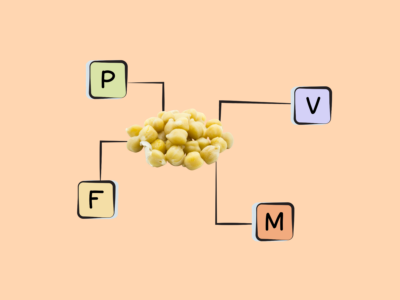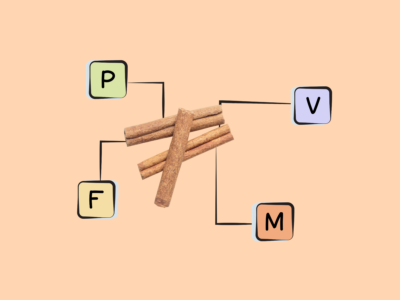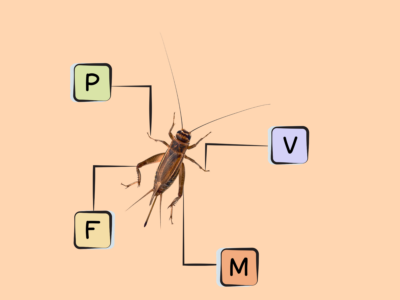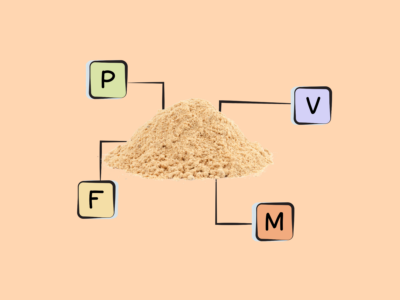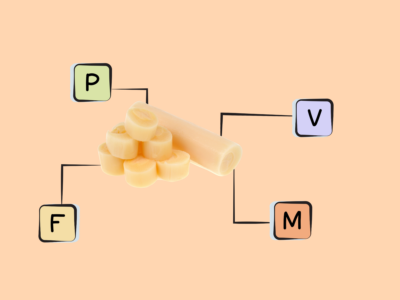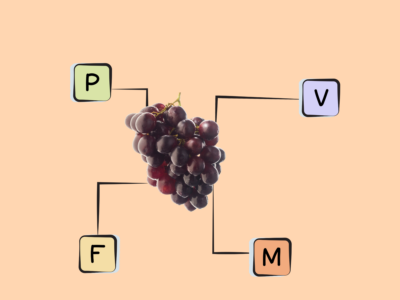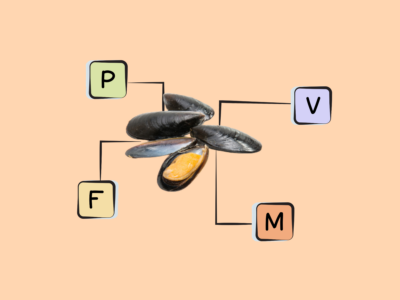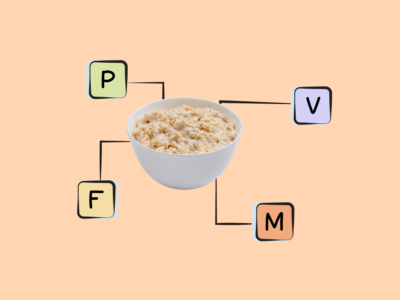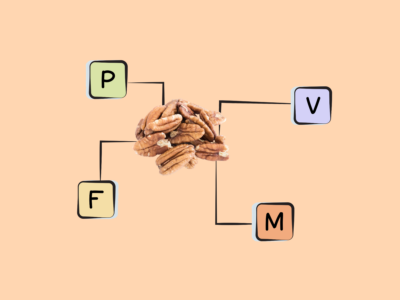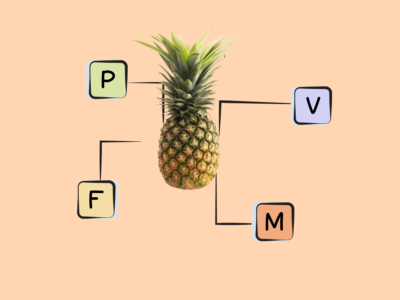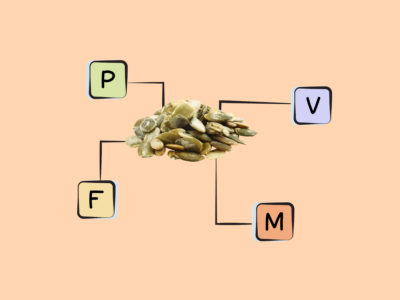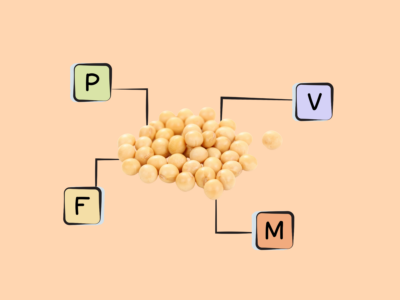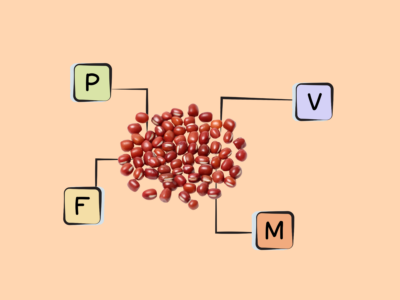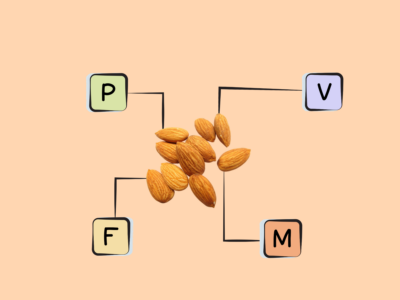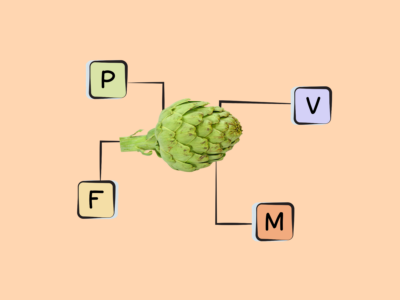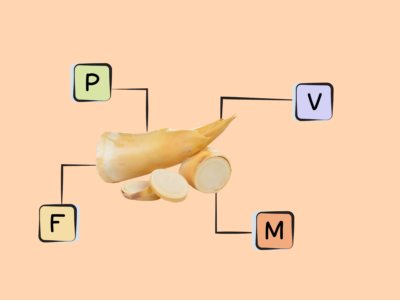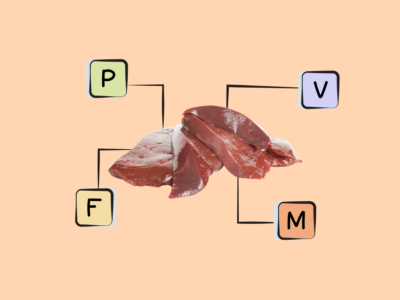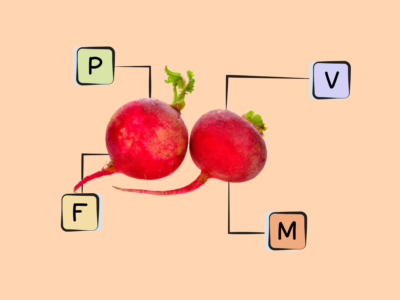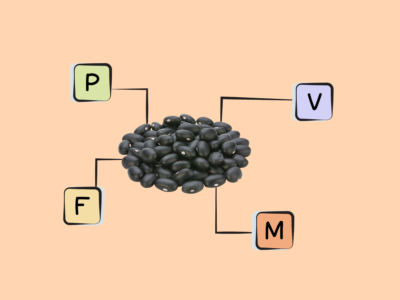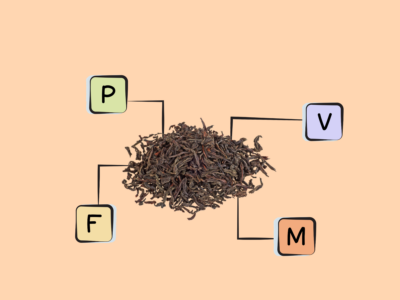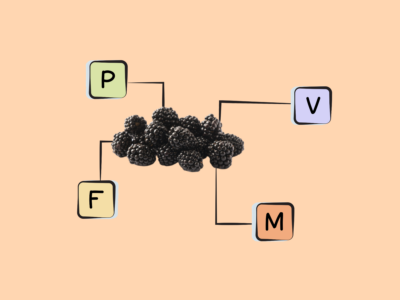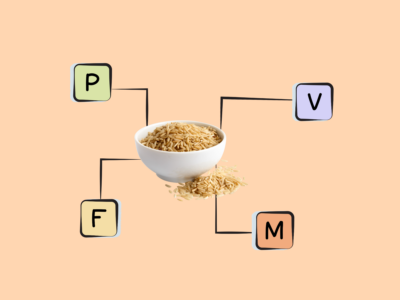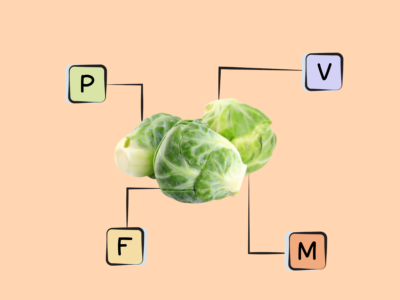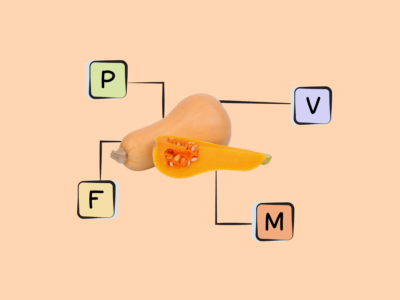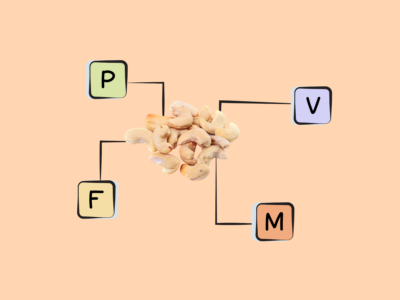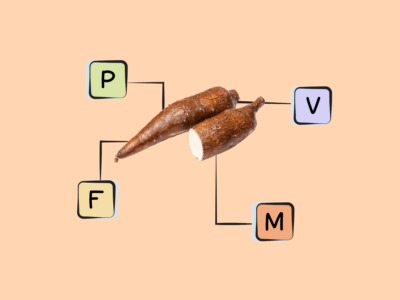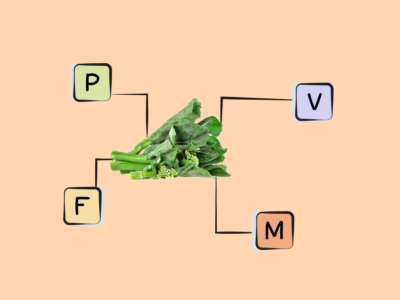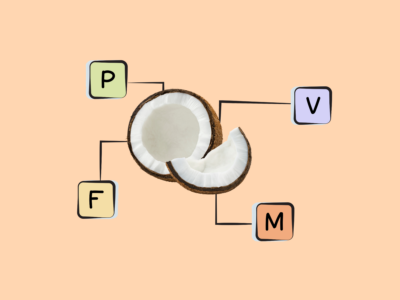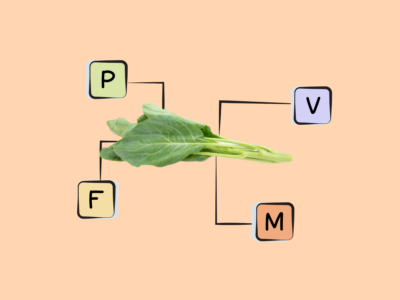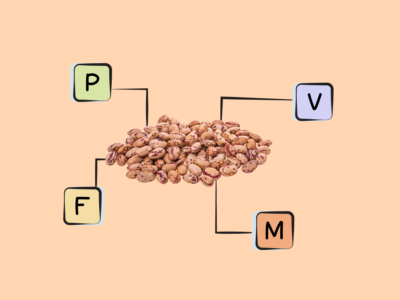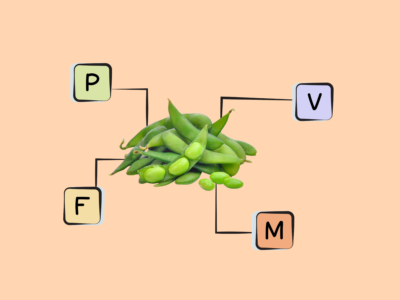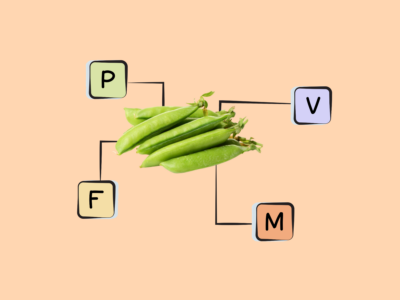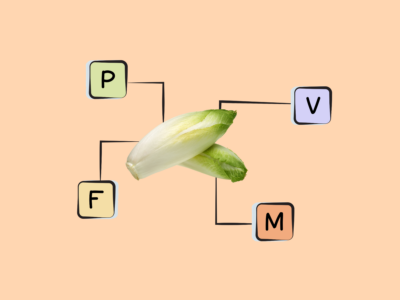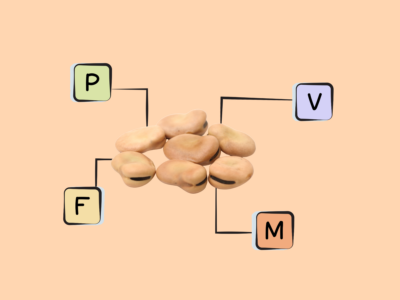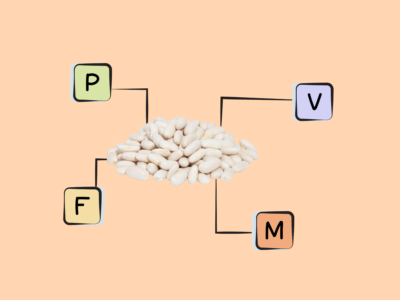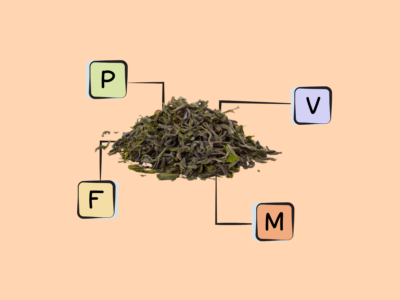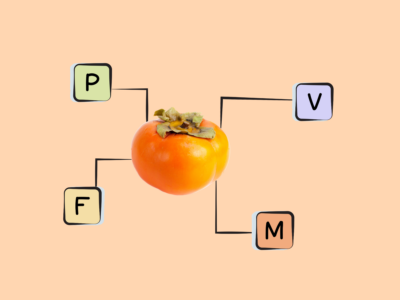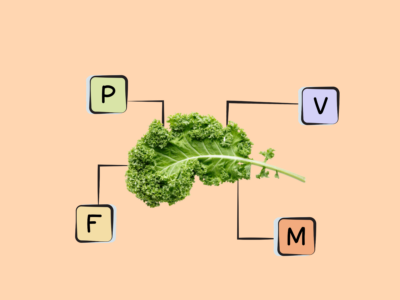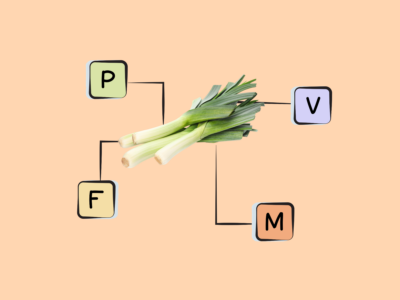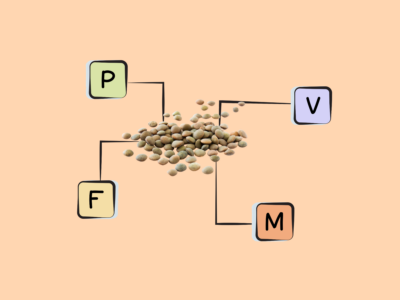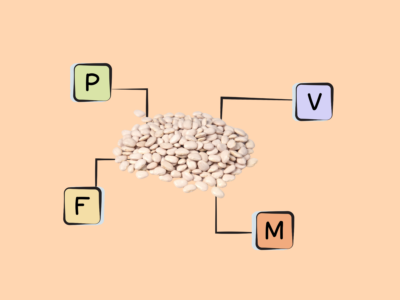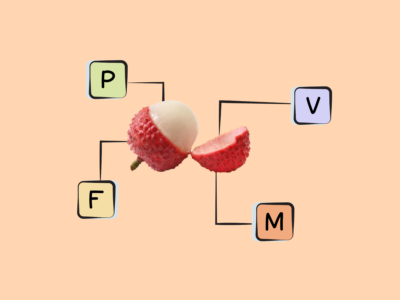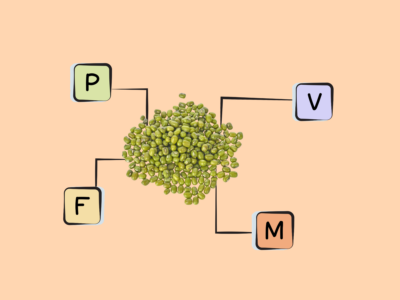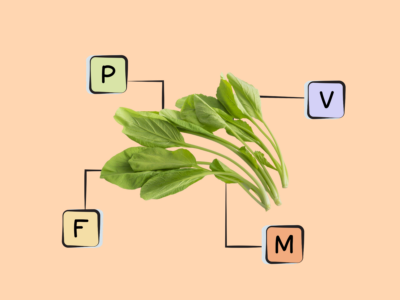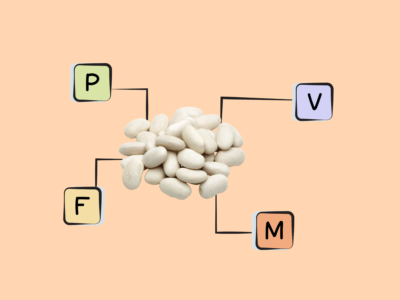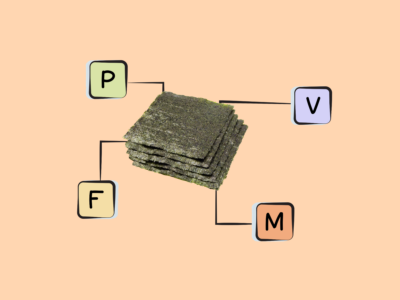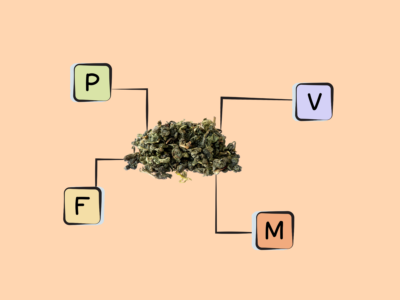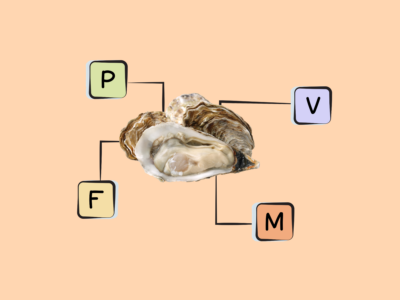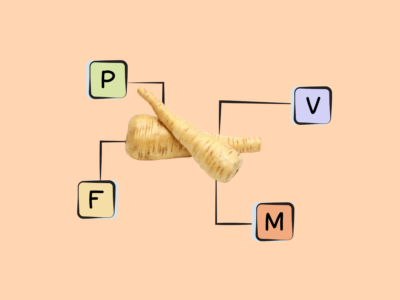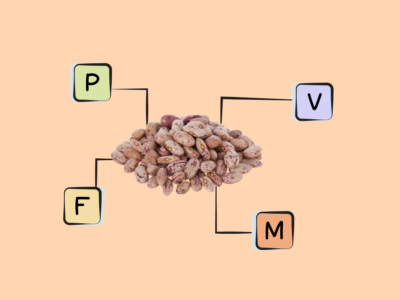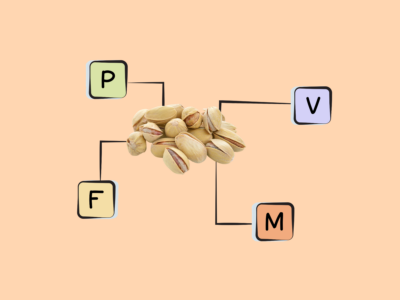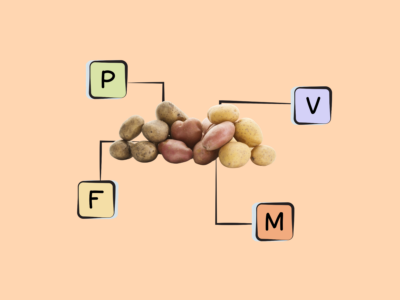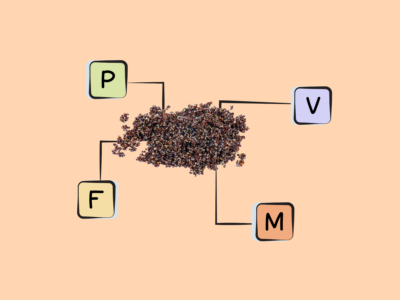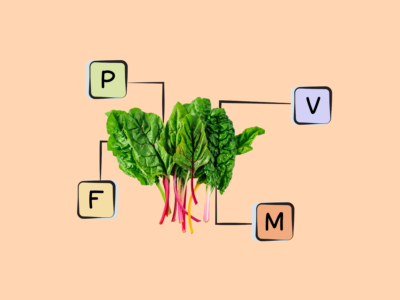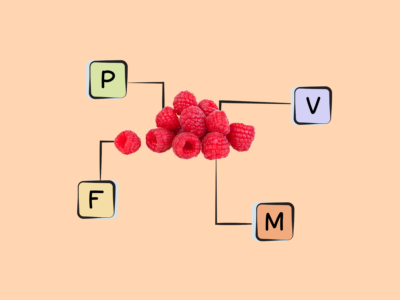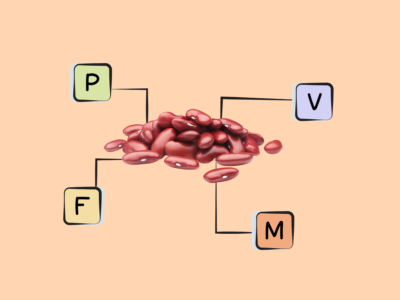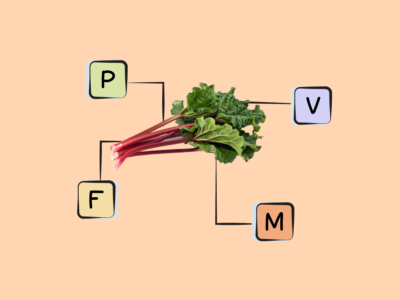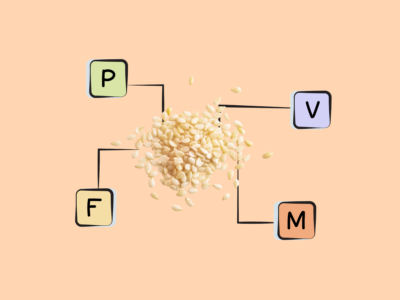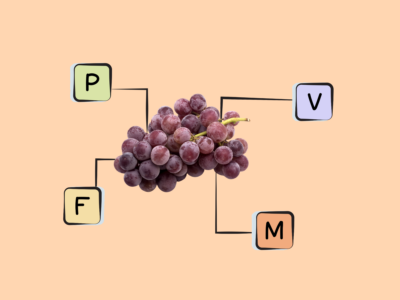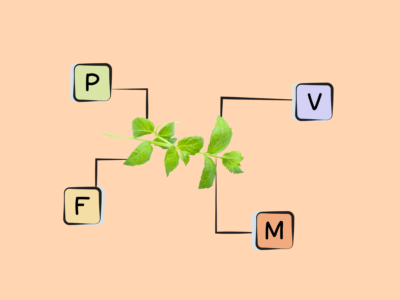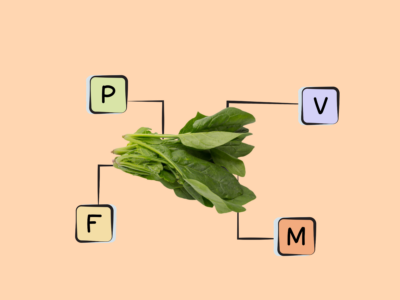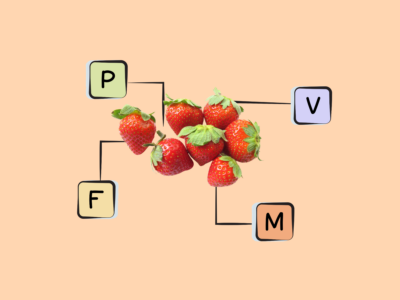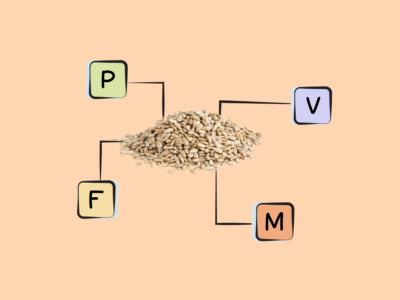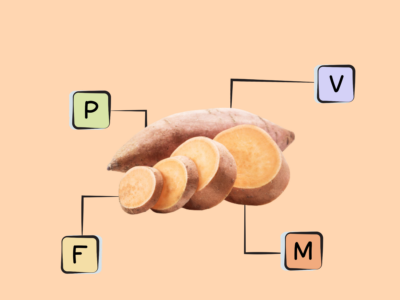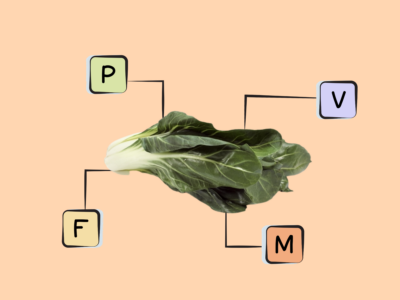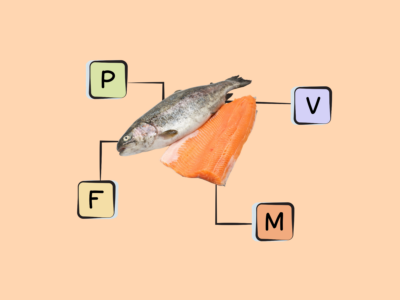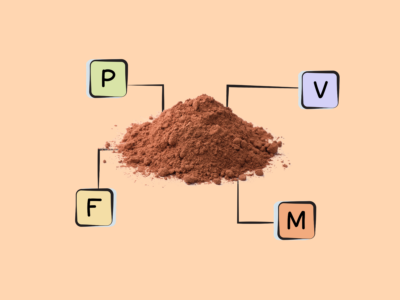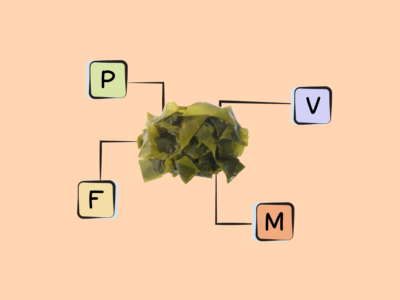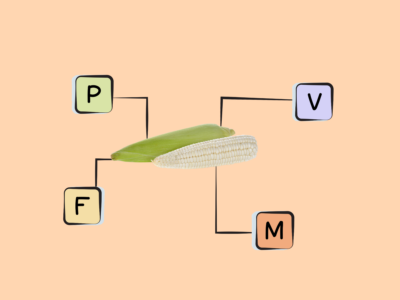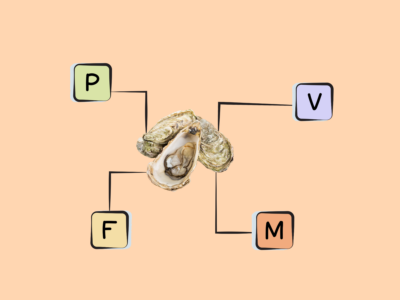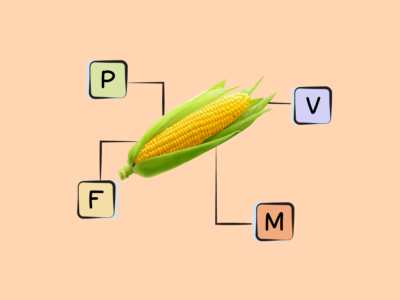Key Takeaways (expand)
- Manganese is a mineral that’s essential for all life.
- Manganese serves as a component of a variety of enzymes, and is also used as an enzyme cofactor (meaning it’s needed for certain enzymes to activate).
- These manganese-containing and manganese-activated enzymes perform numerous biological functions, including carbohydrate and amino acid metabolism, cholesterol processing, ammonia detoxification, gluconeogenesis, proteoglycan synthesis, and free radical defense.
- Through its role as a cofactor for glycotransferases (needed to form cartilage and bone tissue) and prolidase (needed to use proline to form collagen), manganese supports skeletal health, wound healing, and healthy joints and ligaments.
- Manganese serves as a structural component of the enzyme manganese superoxide dismutase, which is one of the most important antioxidants in cells.
- Studies suggest manganese could help protect against diabetes, possibly through its role in glucose homeostasis and carbohydrate metabolism; however, the evidence isn’t totally consistent, and more research is needed.
- Low manganese intake may increase the risk of osteoporosis, due to its important role in enzymes that form bone and collagen.
- Some evidence suggests manganese is involved in seizure disorders, although the exact mechanisms aren’t known.
- Excess environmental exposure and/or ingestion of manganese is toxic to the nervous system, and can lead to a neurodegenerative disorder called manganism, characterized by the death of dopaminergic neurons and symptoms resembling Parkinson’s disease.
- Although true manganese deficiency is uncommon, it can cause skeletal abnormalities, impaired glucose tolerance, bone demineralization, reduced reproductive function, impaired growth, and alterations in carbohydrate and lipid metabolism.
- Great sources of manganese include fish, shellfish, nuts, seeds, sweet potatoes, legumes, tea, cruciferous vegetables, whole grains and dark green vegetables.
Table of Contents[Hide][Show]
The mineral manganese is essential for all life, and the adult human body contains about 10 to 20 mg of it—mostly in the bones, liver, kidney, brain, and pancreas. It’s also the fifth most abundant metal in the earth’s crust. It was first isolated in 1774 from a black ore called pyrolucite (which is mostly composed of manganese dioxide, or MnO2). But, manganese was being used in this black-ore form by cave painters as far back as 30,000 years ago! There’s even evidence that Neanderthals collected pyrolucite in order to make fire, likely because this material lowers the temperature at which wood auto-ignites and therefore makes building fire easier. Manganese compounds were also used by Roman and Egyptian glassmakers to add or remove color from glass!
Manganese is needed for bone formation, free radical defense, macronutrient metabolism (including blood sugar control), and skin integrity. It also serves as a component of many different enzymes. Foods high in manganese include fish and shellfish (particularly mussels, clams, and oysters), nuts and seeds, sweet potatoes, legumes, leafy dark green vegetables, tea, and cruciferous vegetables (such as broccoli, cauliflower, cabbage, kale, Brussels sprouts, and turnip greens). Whole grains—particularly oatmeal, brown rice, and bran cereals—are also rich sources.
What Are The Biological Roles of Manganese?
Manganese serves as a component of a variety of enzymes, and is also needed for certain enzymes to activate. Oxidoreductases (which catalyze oxidation-reduction reactions), transferases (which catalyze the transfer of non-hydrogen chemical groups from one compound to another), hydrolases (which use water to break chemical bonds), lyases (which break down chemical bonds without the use of water), isomerases (which catalyze structural rearrangements inside of a molecule), and ligases (which join two molecules together by creating a new chemical bond) are all classes of enzymes that use manganese as a cofactor!
Some of these manganese-activated (and manganese-containing) enzymes are needed for processing carbohydrates, amino acids, and cholesterol—giving manganese a role in macronutrient metabolism. For example, the enzymes pyruvate carboxylase (which contains manganese) and phosphoenolpyruvate carboxykinase (which is activated by manganese) are used for gluconeogenesis—the process of producing glucose from non-carbohydrate sources. Likewise, the manganese-containing enzyme arginase plays an important role in the urea cycle, helping the liver detoxify ammonia created during amino acid metabolism. And, a manganese-activated enzyme called glutamine synthetase helps convert the amino acid glutamate into glutamine in the brain, in turn supporting the synthesis of proteins, nucleic acids, and mucopolysaccharides (all of which have biosynthetic pathways that glutamine is needed for).
Through its cofactor role, manganese is also important for bone health, cartilage formation, and wound healing. For one, manganese activates enzymes called glycotransferases, which are needed in order to synthesize proteoglycans—proteins the body uses to form healthy cartilage and bone tissue. Glycotransferases also allow for the synthesis of glycosaminoglycans, which are long polysaccharides that support structural components of skin and appear to play a role in wound healing. Another manganese-activated enzyme, prolidase, assists in wound healing by helping the body use proline (an amino acid) to form collagen in skin cells (in fact, one of the consequences of prolidase deficiency is abnormal wound healing!).
Notably, manganese is part of the enzyme manganese superoxide dismutase—one of the most important antioxidant components in a cell. This enzyme is the chief scavenger of reactive oxygen species produced within the mitochondria, and works by converting a free radical called superoxide (which is created during ATP synthesis) into oxygen and hydrogen peroxide. As a result, manganese superoxide dismutase helps protect against mitochondrial dysfunction, and its activity has an enormous impact on the health of the cell!
Manganese also plays an important role in plant photosynthesis, due to serving as a molecular component of chlorophyll. As a result, the manganese content of soil can influence the health of plant crops. Manganese (in the form of manganese sulfate) is often used as a fertilizer for soil to support the growth of crops like citrus.
Because both too much and too little manganese can be dangerous, the body tightly regulates its levels through two general avenues: by adjusting the absorption of manganese in the intestine, and by adjusting its excretion into bile.
How Does Manganese Interact with Other Nutrients?
Manganese interacts with several other nutrients in important ways. Dietary iron, for example, can decrease manganese absorption because these two minerals share common proteins for their transport and absorption (particularly transferrin, ferroportin, the lactoferrin receptor, and the divalent metal transporter 1). Iron supplementation of 60 mg daily for four months has been shown to reduce manganese levels in the blood, as well as decrease the activity of some manganese-dependent enzymes like manganese superoxide reductase; iron excess in general (as measured by high ferritin concentrations) is associated with reduced manganese absorption in the intestine. Meanwhile, iron deficiency has been associated with increased manganese absorption, as well as potentially dangerous manganese accumulation in the brain. (Interestingly, men generally absorb less manganese than women, regardless of dietary intake—a phenomenon that’s likely due to the fact that men have higher iron stores!)
Other potential nutrient interactions with manganese include magnesium and calcium, both of which have been shown to slightly reduce manganese availability (at least in the form of supplements!).
The antibiotic medication tetracycline, as well as magnesium-containing laxatives or antacids, can also decrease manganese absorption when taken at the same time as a manganese-containing meal.
Want to know the top 25 foods for this awesome nutrient?

The Top 25 Foods for Every Nutrient
The Top 25 Foods for Every Nutrient e-book is a well-organized, easy-to-use, grocery store-friendly guide to help you choose foods that fit your needs of 43 important nutrients while creating a balanced nutrient-dense diet.
Get two “Top 25” food lists for each nutrient, plus you’ll find RDA charts for everyone, informative visuals, fun facts, serving sizes and the 58 foods that are Nutrient Super Stars!
Buy now for instant digital access.
How Does Manganese Affect Health and Disease?
Manganese plays a particularly vital role in skeletal health and wound healing, due to serving as a cofactor for enzymes involved in cartilage and collagen formation. Getting enough of this nutrient may also help protect against diabetes, osteoporosis, and seizure disorders, although more research is needed in all of these areas. And, both too little and too much manganese can be problematic: while a deficiency can cause skeletal abnormalities, impaired growth, and alterations in carbohydrate tolerance and metabolism, too much can be toxic to the nervous system (although it takes extremely high exposures to get there!).
Manganese and Type 2 Diabetes
Research shows that manganese may play a role in protecting against several chronic diseases—a major one being diabetes. In animal models, manganese deficiency leads to glucose intolerance and impaired insulin secretion in a way that resembles type 2 diabetes, and several large prospective cohort studies have shown inverse associations between manganese intake and the development of type 2 diabetes over time. In a Japanese cohort of nearly 20,000 people, women in the highest quartile of manganese intake had a 47% lower risk of developing diabetes than those in the lowest quartile!
That being said, other studies that use biomarkers of manganese intake (rather than self-reported intakes) have shown mixed results, including no relationship between manganese status and diabetes, a positive association between manganese status and diabetes, a negative association between manganese status and diabetes, and a U-shaped curve relationship between manganese status and diabetes (meaning both the highest and lowest levels were associated with an increased risk)!
Given the known role of manganese in glucose homeostasis and carbohydrate metabolism, a protective effect against metabolic diseases like diabetes seems plausible. But, more research is clearly needed to understand this relationship, especially in humans.
Manganese and Osteoporosis
Manganese may also have some important links with osteoporosis. Multiple observational studies have found that women with osteoporosis tend to have low levels of manganese in their blood, and a placebo-controlled trial of postmenopausal women showed that adding manganese, copper, and zinc to a calcium supplement was more effective at preventing spinal bone loss than the calcium supplement alone. But, it’s hard to say from this study how much benefit was from manganese itself versus the other trace elements, and there’s a shortage of controlled trials studying the effects of manganese specifically on bone health. If a higher intake of manganese does have a protective effect against osteoporosis, it’s likely due to its role in bone- and collagen-forming enzymes.
Manganese and Seizures
There’s even some evidence that manganese is involved in seizure disorders, although its precise role isn’t fully understood. In rats, manganese deficiency increases susceptibility to seizures, and genetically epilepsy-prone rats have been shown to have lower concentrations of manganese in their blood and brain. Even in humans, studies have documented a correlation between convulsions and low blood levels of manganese, as well as a possible relationship between genetic disorders of manganese metabolism and epilepsy. However, much more research is needed to understand how manganese might play a role in seizure disorders!
Manganese and Osteoarthritis
Some research has linked manganese with osteoarthritis, a degenerative joint disease. A 1999 randomized, double-blind, placebo-controlled crossover trial tested the effects of a combination of glucosamine HCl (1,500 mg/day), chondroitin sulfate (1,200 mg/day), and manganese ascorbate (228 mg/day) in patients with osteoarthritis of the knee or low back. The results showed that this mixture significantly improved knee osteoarthritis symptoms.
A 2000 randomized placebo-controlled study of patients with osteoarthritis of the knee found similar results with a supplemental mixture of glucosamine HCl, sodium chondroitin sulfate, and manganese ascorbate. Compared to the control group, those in the intervention group saw significant improvements in the severity of their osteoarthritis (though these findings were most pronounced for patients with mild or moderate, but not severe, forms of the disease).
More research is needed to test the independent effects of manganese on osteoarthritis!
Didn’t know manganese was this fascinating? Maybe your friends will enjoy this too!
What Are the Symptoms of Manganese Deficiency?
True manganese deficiency is relatively uncommon in humans, and has mostly been studied in animals—where it’s been shown to cause impaired growth, skeletal abnormalities, impaired glucose tolerance, reduced reproductive function, and changes in carbohydrate and lipid metabolism. In human reports of manganese deficiency, symptoms have included bone demineralization and impaired growth in young children, skin rashes, indicators of increased bone remodeling (such as elevated phosphorus, calcium, and alkaline phosphatase), and poor glucose tolerance.
Despite its importance in human health, manganese is often left out of the formulas for nutritional supplements, including multivitamins. This brings a risk (albeit small!) of developing mineral imbalances among people who regularly use high-dose nutritional supplements, especially if iron intake is high.
Why Is it Bad to Have Too Much Manganese?
While manganese is essential for health, it can also be toxic to the nervous system at high levels. In fact, excessive environmental exposure, or the ingestion of very high amounts of manganese, can cause a neurodegenerative disorder called manganism—in which dopaminergic neurons die, leading to symptoms resembling those of Parkinson’s disease. This includes tremors, facial and muscle spasms, difficulty walking, and sometimes psychiatric symptoms like irritability and hallucinations. Most often, manganism results from inhaling manganese powder (making miners, smelters, and welders at the highest risk), but in some cases, this condition has been associated with drinking high-manganese water (typically from external contamination).
Some cross-sectional and prospective cohort studies of children have found a link between drinking water with excess manganese levels and behavioral and cognitive problems, including lower performance IQ, higher incidence of conduct problems (especially in boys), and a higher risk of ADHD-Inattentive subtype. Less commonly, manganese toxicity has been reported from taking high-dose manganese supplements for long periods of time, and adverse effects have occurred taking herbal supplements contaminated with manganese. Fortunately, consuming manganese from diet alone doesn’t seem to pose any risk of side effects!
In rare cases, manganese toxicity can occur due to inherited manganese-overload disorders. Autosomal recessive mutations in the SLC30A10 gene can cause manganese overload due to altering the function of a manganese transporter in the liver and brain. People with such mutations end up with manganese accumulation in the liver and certain regions of the brain, leading to liver dysfunction and involuntary muscle contractions (dystonia).
Apart from people with occupational exposure, high-manganese drinking water, or genetic conditions, those at increased risk of manganese toxicity include people with chronic liver disease (since the body uses bile produced by the liver to eliminate manganese), infants and children (who have higher manganese absorption in the intestine, and lower manganese excretion in the bile), and people with iron deficiency (since this leads to increased manganese absorption and sometimes manganese accumulation in the brain).
Everything You Need to Jump into Nutrivore TODAY!

Nutrivore Quickstart Guide
The Nutrivore Quickstart Guide e-book explains why and how to eat a Nutrivore diet, introduces the Nutrivore Score, gives a comprehensive tour of the full range of essential and important nutrients!
Plus, you’ll find the Top 100 Nutrivore Score Foods, analysis of food groups, practical tips to increase the nutrient density of your diet, and look-up tables for the Nutrivore Score of over 700 foods.
Buy now for instant digital access.
How Much Manganese Do We Need?
There’s currently no recommended dietary allowance (RDA) for manganese, but the adequate intake is considered 2.3 mg per day for adult men and 1.8 mg per day for adult women (2 mg daily intake when pregnant, 2.6 mg daily when lactating). Due to the neurotoxic effects of excessive manganese, the tolerable upper intake level for manganese is set at 11 mg daily for adults.
| 0 – 6 months | |||||
| 6 months to < 12 months | |||||
| 1 yr – 3 yrs | |||||
| 4 yrs – 8 yrs | |||||
| 9 yrs – 13 yrs | |||||
| 14 yrs – 18 yrs | |||||
| 19 yrs – 50 yrs | |||||
| 51+ yrs | |||||
| Pregnant (14 – 18 yrs) | |||||
| Pregnant (19 – 30 yrs) | |||||
| Pregnant (31 – 50 yrs) | |||||
| Lactating (14 – 18 yrs) | |||||
| Lactating (19 – 30 yrs) | |||||
| Lactating (31 – 50 yrs) |
Nutrient Daily Values
Nutrition requirements and recommended nutrient intake for infants, children, adolescents, adults, mature adults, and pregnant and lactating individuals.
What Are the Best Food Sources of Manganese?
The following foods have high concentrations of manganese, containing at least 50% of the recommended dietary allowance per serving, making them our best food sources of this valuable mineral!
Want to know the top 500 most nutrient-dense foods?

Top 500 Nutrivore Foods
The Top 500 Nutrivore Foods e-book is an amazing reference deck of the top 500 most nutrient-dense foods according to their Nutrivore Score. Think of it as the go-to resource for a super-nerd, to learn more and better understand which foods stand out, and why!
If you are looking for a quick-reference guide to help enhance your diet with nutrients, and dive into the details of your favorite foods, this book is your one-stop-shop!
Buy now for instant digital access.
What Are Good Food Sources of Manganese?
The following foods are also excellent or good sources of manganese, containing at least 10% (and up to 50%) of the daily value per serving.
Ditch Diets. Embrace Nutrients. Start with this FREE Guide.
Sign up for the free Nutrivore Newsletter, your weekly, science-backed guide to improving health through nutrient-rich foods — without dieting harder —and get the Beginner’s Guide to Nutrivore delivered straight to your inbox!

Citations
Expand to see all scientific references for this article.
Anetor JI, Asiribo OA, Adedapo KS, Akingbola TS, Olorunnisola OS, Adeniyi FA. Increased plasma manganese, partially reduced ascorbate, 1 and absence of mitochondrial oxidative stress in type 2 diabetes mellitus: implications for the superoxide uncoupling protein 2 (UCP-2) pathway. Biol Trace Elem Res. 2007 Winter;120(1-3):19-27. doi: 10.1007/s12011-007-0069-x.
Aschner M, Dorman DC. Manganese: pharmacokinetics and molecular mechanisms of brain uptake. Toxicol Rev. 2006;25(3):147-54. doi: 10.2165/00139709-200625030-00002.
Bouchard MF, Sauvé S, Barbeau B, Legrand M, Brodeur MÈ, Bouffard T, Limoges E, Bellinger DC, Mergler D. Intellectual impairment in school-age children exposed to manganese from drinking water. Environ Health Perspect. 2011 Jan;119(1):138-43. doi: 10.1289/ehp.1002321.
Carl GF, Keen CL, Gallagher BB, Clegg MS, Littleton WH, Flannery DB, Hurley LS. Association of low blood manganese concentrations with epilepsy. Neurology. 1986 Dec;36(12):1584-7. doi: 10.1212/wnl.36.12.1584.
Chen P, Bornhorst J, Aschner M. Manganese metabolism in humans. Front Biosci (Landmark Ed). 2018 Mar 1;23:1655-1679. doi: 10.2741/4665.
Dion LA, Saint-Amour D, Sauvé S, Barbeau B, Mergler D, Bouchard MF. Changes in water manganese levels and longitudinal assessment of intellectual function in children exposed through drinking water. Neurotoxicology. 2018 Jan;64:118-125. doi: 10.1016/j.neuro.2017.08.015.
Das A Jr, Hammad TA. Efficacy of a combination of FCHG49 glucosamine hydrochloride, TRH122 low molecular weight sodium chondroitin sulfate and manganese ascorbate in the management of knee osteoarthritis. Osteoarthritis Cartilage. 2000 Sep;8(5):343-50. doi: 10.1053/joca.1999.0308.
Du S, Wu X, Han T, Duan W, Liu L, Qi J, Niu Y, Na L, Sun C. Dietary manganese and type 2 diabetes mellitus: two prospective cohort studies in China. Diabetologia. 2018 Sep;61(9):1985-1995. doi: 10.1007/s00125-018-4674-3.
Eshak ES, Muraki I, Imano H, Yamagishi K, Tamakoshi A, Iso H. Manganese intake from foods and beverages is associated with a reduced risk of type 2 diabetes. Maturitas. 2021 Jan;143:127-131. doi: 10.1016/j.maturitas.2020.10.009.
Finley JW. Manganese absorption and retention by young women is associated with serum ferritin concentration. Am J Clin Nutr. 1999 Jul;70(1):37-43. doi: 10.1093/ajcn/70.1.37.
Finley JW, Johnson PE, Johnson LK. Sex affects manganese absorption and retention by humans from a diet adequate in manganese. Am J Clin Nutr. 1994 Dec;60(6):949-55. doi: 10.1093/ajcn/60.6.949.
Friedman BJ, Freeland-Graves JH, Bales CW, Behmardi F, Shorey-Kutschke RL, Willis RA, Crosby JB, Trickett PC, Houston SD. Manganese balance and clinical observations in young men fed a manganese-deficient diet. J Nutr. 1987 Jan;117(1):133-43. doi: 10.1093/jn/117.1.133.
Gonzalez-Reyes RE, Gutierrez-Alvarez AM, Moreno CB. Manganese and epilepsy: a systematic review of the literature. Brain Res Rev. 2007 Feb;53(2):332-6. doi: 10.1016/j.brainresrev.2006.10.002.
Hansen AF, Simić A, Åsvold BO, Romundstad PR, Midthjell K, Syversen T, Flaten TP. Trace elements in early phase type 2 diabetes mellitus-A population-based study. The HUNT study in Norway. J Trace Elem Med Biol. 2017 Mar;40:46-53. doi: 10.1016/j.jtemb.2016.12.008.
Heyes PJ, Anastasakis K, de Jong W, van Hoesel A, Roebroeks W, Soressi M. Selection and Use of Manganese Dioxide by Neanderthals. Sci Rep. 2016 Feb 29;6:22159. doi: 10.1038/srep22159.
Holley AK, Bakthavatchalu V, Velez-Roman JM, St Clair DK. Manganese superoxide dismutase: guardian of the powerhouse. Int J Mol Sci. 2011;12(10):7114-62. doi: 10.3390/ijms12107114.
Institute of Medicine (US) Panel on Micronutrients. Dietary Reference Intakes for Vitamin A, Vitamin K, Arsenic, Boron, Chromium, Copper, Iodine, Iron, Manganese, Molybdenum, Nickel, Silicon, Vanadium, and Zinc. Washington (DC): National Academy Press (US); 2001.
Leffler CT, Philippi AF, Leffler SG, Mosure JC, Kim PD. Glucosamine, chondroitin, and manganese ascorbate for degenerative joint disease of the knee or low back: a randomized, double-blind, placebo-controlled pilot study. Mil Med. 1999 Feb;164(2):85-91.
Li XT, Yu PF, Gao Y, Guo WH, Wang J, Liu X, Gu AH, Ji GX, Dong Q, Wang BS, Cao Y, Zhu BL, Xiao H. Association between Plasma Metal Levels and Diabetes Risk: a Case-control Study in China. Biomed Environ Sci. 2017 Jul;30(7):482-491. doi: 10.3967/bes2017.064.
Liu W, Xin Y, Li Q, Shang Y, Ping Z, Min J, Cahill CM, Rogers JT, Wang F. Biomarkers of environmental manganese exposure and associations with childhood neurodevelopment: a systematic review and meta-analysis. Environ Health. 2020 Oct 2;19(1):104. doi: 10.1186/s12940-020-00659-x.
Kazi TG, Afridi HI, Kazi N, Jamali MK, Arain MB, Jalbani N, Kandhro GA. Copper, chromium, manganese, iron, nickel, and zinc levels in biological samples of diabetes mellitus patients. Biol Trace Elem Res. 2008 Apr;122(1):1-18. doi: 10.1007/s12011-007-8062-y.
Kim Y, Lee BK. Iron deficiency increases blood manganese level in the Korean general population according to KNHANES 2008. Neurotoxicology. 2011 Mar;32(2):247-54. doi: 10.1016/j.neuro.2010.12.006.
Koh ES, Kim SJ, Yoon HE, Chung JH, Chung S, Park CW, Chang YS, Shin SJ. Association of blood manganese level with diabetes and renal dysfunction: a cross-sectional study of the Korean general population. BMC Endocr Disord. 2014 Mar 8;14:24. doi: 10.1186/1472-6823-14-24.
Mancini FR, Dow C, Affret A, Rajaobelina K, Dartois L, Balkau B, Bonnet F, Boutron-Ruault MC, Fagherazzi G. Micronutrient dietary patterns associated with type 2 diabetes mellitus among women of the E3N-EPIC (Etude Epidémiologique auprès de femmes de l’Education Nationale) cohort study. J Diabetes. 2018 Aug;10(8):665-674. doi: 10.1111/1753-0407.12654.
Odabasi E, Turan M, Aydin A, Akay C, Kutlu M. Magnesium, zinc, copper, manganese, and selenium levels in postmenopausal women with osteoporosis. Can magnesium play a key role in osteoporosis? Ann Acad Med Singap. 2008 Jul;37(7):564-7.
Pal PK, Samii A, Calne DB. Manganese neurotoxicity: a review of clinical features, imaging and pathology. Neurotoxicology. 1999 Apr-Jun;20(2-3):227-38.
Rahman SM, Kippler M, Tofail F, Bölte S, Hamadani JD, Vahter M. Manganese in Drinking Water and Cognitive Abilities and Behavior at 10 Years of Age: A Prospective Cohort Study. Environ Health Perspect. 2017 May 26;125(5):057003. doi: 10.1289/EHP631.
Schullehner J, Thygesen M, Kristiansen SM, Hansen B, Pedersen CB, Dalsgaard S. Exposure to Manganese in Drinking Water during Childhood and Association with Attention-Deficit Hyperactivity Disorder: A Nationwide Cohort Study. Environ Health Perspect. 2020 Sep;128(9):97004. doi: 10.1289/EHP6391.
Shan Z, Chen S, Sun T, Luo C, Guo Y, Yu X, Yang W, Hu FB, Liu L. U-Shaped Association between Plasma Manganese Levels and Type 2 Diabetes. Environ Health Perspect. 2016 Dec;124(12):1876-1881. doi: 10.1289/EHP176.
Simić A, Hansen AF, Åsvold BO, Romundstad PR, Midthjell K, Syversen T, Flaten TP. Trace element status in patients with type 2 diabetes in Norway: The HUNT3 Survey. J Trace Elem Med Biol. 2017 May;41:91-98. doi: 10.1016/j.jtemb.2017.03.001.
Strause L, Saltman P, Smith KT, Bracker M, Andon MB. Spinal bone loss in postmenopausal women supplemented with calcium and trace minerals. J Nutr. 1994 Jul;124(7):1060-4. doi: 10.1093/jn/124.7.1060.
Walter RM Jr, Uriu-Hare JY, Olin KL, Oster MH, Anawalt BD, Critchfield JW, Keen CL. Copper, zinc, manganese, and magnesium status and complications of diabetes mellitus. Diabetes Care. 1991 Nov;14(11):1050-6. doi: 10.2337/diacare.14.11.1050.
Ye Q, Park JE, Gugnani K, Betharia S, Pino-Figueroa A, Kim J. Influence of iron metabolism on manganese transport and toxicity. Metallomics. 2017 Aug 16;9(8):1028-1046. doi: 10.1039/c7mt00079k.



